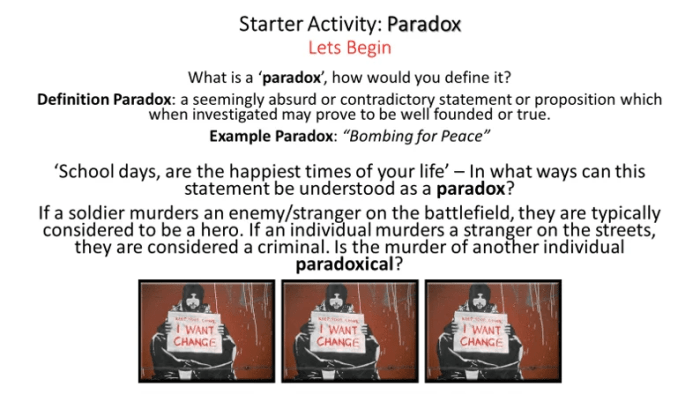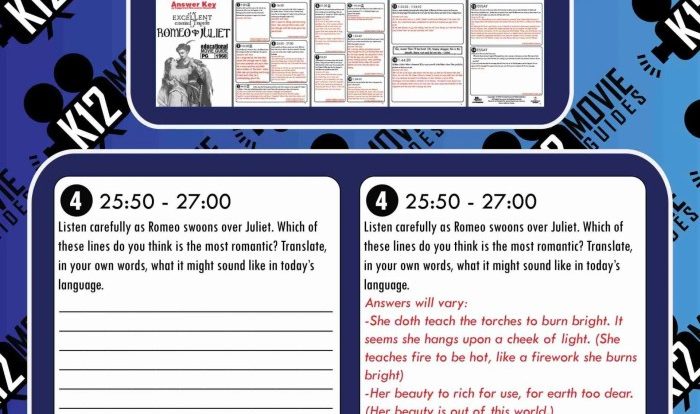Rhetorical devices in To Kill a Mockingbird are the intricate tools employed by Harper Lee to craft a narrative that transcends mere storytelling. These literary techniques illuminate the novel’s themes, enhance character development, and create an immersive reading experience.
From the poignant metaphors that shape the novel’s central conflict to the subtle foreshadowing that builds suspense, each rhetorical device serves a specific purpose in shaping the reader’s journey through this classic work of American literature.
Metaphors

Metaphors in “To Kill a Mockingbird” are powerful tools that illuminate the novel’s themes and characters. They create vivid comparisons that transcend literal meanings, offering deeper insights into the human experience.
Examples of Metaphors and Interpretations
- “The world’s a wheel. Keep your hand on the plow.” – The journey of life is continuous and challenging, requiring persistence.
- “The mockingbird symbolizes innocence and purity.” – Mockingbirds are gentle creatures that are often victimized, representing the vulnerability of the innocent.
Contribution to Themes and Characters, Rhetorical devices in to kill a mockingbird
Metaphors enhance the novel’s exploration of prejudice, morality, and justice. They reveal the complexities of human nature, the struggles against societal norms, and the consequences of intolerance.
Similes: Rhetorical Devices In To Kill A Mockingbird
Similes in “To Kill a Mockingbird” create vivid imagery and deepen our understanding of characters and situations. They compare two unlike things using “like” or “as.”
Examples of Similes and Meanings
- “The jury watched him like hawks.” – The jury members were intently observing him.
- “Her eyes were as clear as the sky.” – Her eyes were bright and innocent.
Enhancement of Imagery and Character Understanding
Similes paint a vivid picture, making the novel’s world more tangible and relatable. They also reveal the characters’ emotions, perspectives, and relationships.
Foreshadowing

Foreshadowing in “To Kill a Mockingbird” creates suspense and anticipation by hinting at future events. It builds tension and prepares the reader for the novel’s dramatic climax.
Techniques of Foreshadowing
- Dreams:Scout’s recurring nightmare foreshadows the trial and Tom Robinson’s fate.
- Symbols:The mockingbird symbolizes innocence and foreshadows the harm that will come to Tom.
- Dialog:Characters’ conversations hint at upcoming events, such as the trial and the children’s encounter with Bob Ewell.
Significance of Foreshadowing
Foreshadowing enhances the novel’s suspense, builds tension, and creates a sense of inevitability. It allows the reader to anticipate events while also questioning their own assumptions.
Irony
Irony in “To Kill a Mockingbird” creates a contrast between expectations and reality, highlighting the hypocrisy and injustice of the society depicted in the novel.
Types of Irony
- Verbal Irony:When a character says one thing but means the opposite.
- Situational Irony:When a situation turns out differently than expected.
- Dramatic Irony:When the reader knows something that the characters do not.
Contribution to the Novel’s Critique of Society
Irony exposes the contradictions and prejudices within the society of Maycomb. It highlights the hypocrisy of those who claim to be moral while engaging in unjust behavior.
Symbolism
Symbolism in “To Kill a Mockingbird” adds depth and meaning to the novel by using objects, characters, and events to represent abstract ideas or themes.
Key Symbols and Meanings
- Mockingbird:Innocence, purity, and the need to protect the vulnerable.
- Radley House:Mystery, fear, and the unknown.
- Boo Radley:Loneliness, isolation, and the power of compassion.
Enrichment of Themes and Characters
Symbolism enhances the novel’s themes of prejudice, morality, and justice. It creates a rich and layered world that invites multiple interpretations and encourages readers to think critically about the novel’s message.
Imagery
Imagery in “To Kill a Mockingbird” appeals to the senses and creates a vivid and immersive world for the reader. It transports us to the American South and brings the characters and their experiences to life.
| Type of Imagery | Examples | Significance |
|---|---|---|
| Visual: | “The street was a torrent of red mud.” | Creates a vivid picture of the muddy streets of Maycomb. |
| Auditory: | “The mockingbirds sang their hearts out.” | Evoke the peaceful and harmonious atmosphere of Maycomb. |
| Olfactory: | “The smell of honeysuckle hung in the air.” | Transports the reader to the warm and fragrant summer nights of the South. |
| Tactile: | “Her hand was as cold as ice.” | Convey the physical and emotional state of characters. |
| Gustatory: | “The lemonade was sweet and refreshing.” | Create a sense of nostalgia and comfort. |
Contribution to Setting and Atmosphere
Imagery immerses the reader in the novel’s setting and atmosphere. It brings the world of Maycomb to life, allowing us to experience its beauty, warmth, and complexities.
Hyperbole
Hyperbole in “To Kill a Mockingbird” emphasizes the characters’ emotions and experiences by exaggerating the truth for effect.
Examples of Hyperbole and Interpretations
- “She was as thin as a rail.” – The character was extremely thin.
- “I’m so hungry I could eat a horse.” – The character is very hungry.
Emphasis on Emotions and Experiences
Hyperbole amplifies the characters’ feelings, thoughts, and actions. It creates a sense of urgency and drama, highlighting the intensity of their experiences.
FAQ Corner
What is the significance of metaphors in To Kill a Mockingbird?
Metaphors in the novel serve to create vivid imagery, explore complex themes, and reveal the characters’ inner thoughts and emotions.
How does foreshadowing contribute to the novel’s plot?
Foreshadowing creates suspense and builds anticipation by hinting at future events, adding depth and complexity to the narrative.
What types of irony are present in To Kill a Mockingbird?
The novel employs various types of irony, including situational irony, dramatic irony, and verbal irony, to highlight the contradictions and complexities of human nature.


